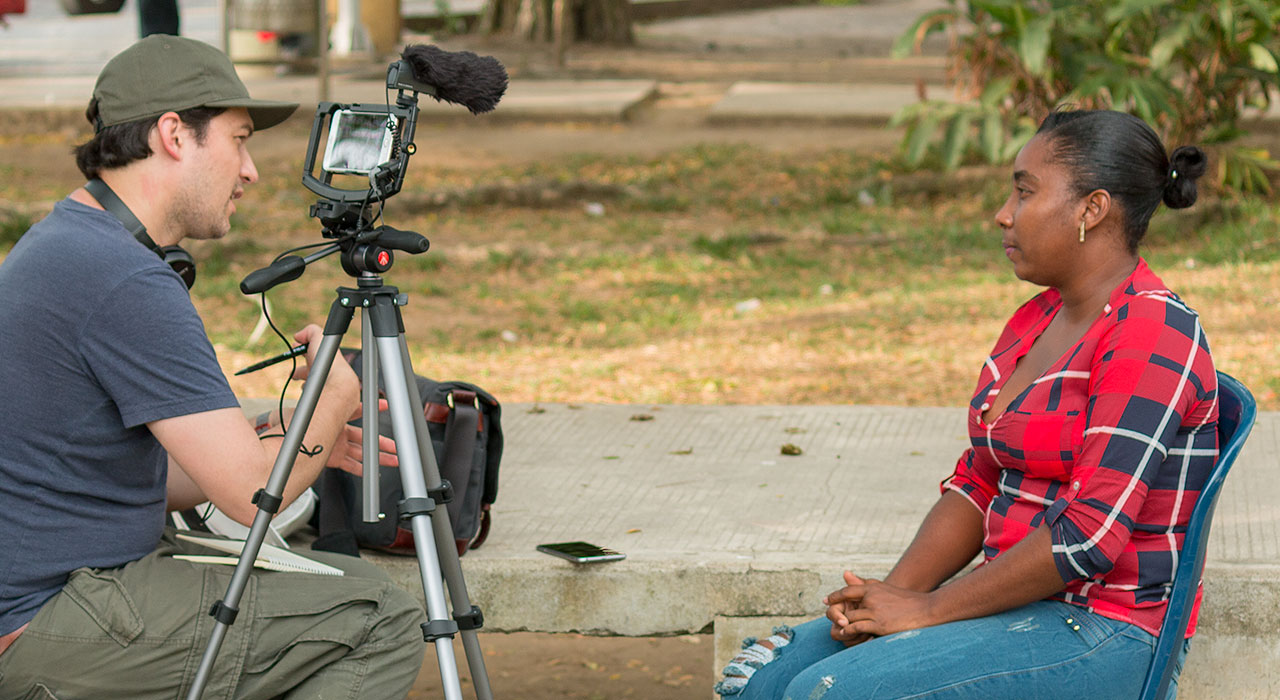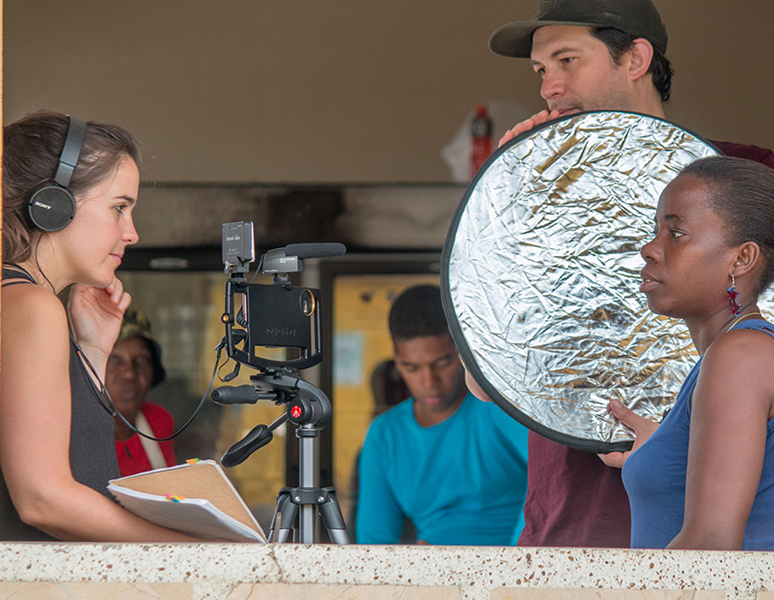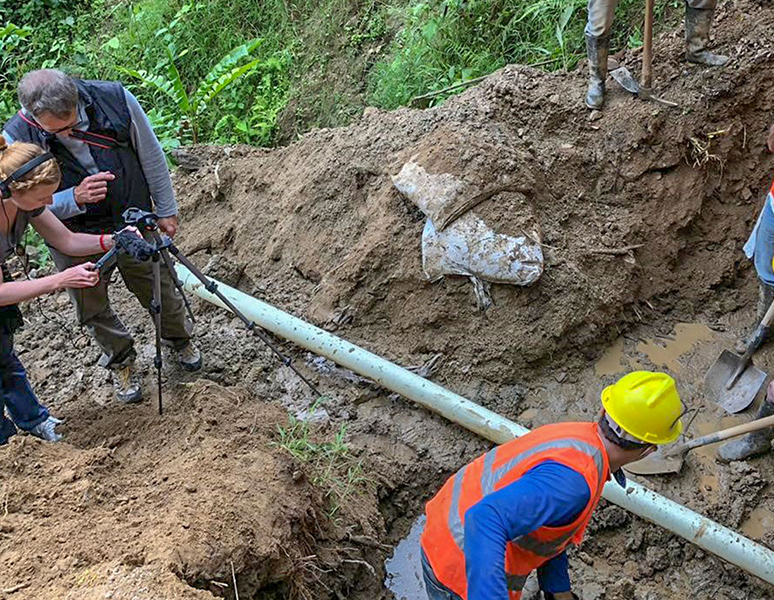- Blog
- / January 14, 2019
Turning Video Neophytes into Ninjas

Thanks to the ubiquity of mobile devices, anyone can make a video today. Democratizing and simplifying the formerly expensive and complicated process of media content creation has unleashed exponential diversity, which benefits us all. But it has also generated a tsunami of lousy content.
High-caliber camerawork, combined with clear, interesting and skillful storytelling, are relatively rare outside of those videos professionally created. And regarding those professionally created, clients want them cheaper and faster than ever before.
We know it’s possible to make low-cost, high production value and solidly narrative videos that tell powerful stories. In fact, we are constantly pushing the envelope to find new ways to enable our in-house professional video makers, and train our field teams, client communicators and partners to get the stories on the ground in faster, cheaper and more effective ways.
I was recently in Colombia, piloting a novel approach to raise the visibility of the USAID-funded Regional Governance Activity (RGA) project using video pitches to reporters and assignment editors, to garner earned media coverage. RGA assists municipal governments strengthen their capacity to better serve their local citizens. And it improves coordination with the federal government to drive design and implementation of policies and programs needed to improve the lives of Colombians across the country. The program’s efforts are resulting in significant, positive and newsworthy change, and from a communications standpoint we want to leverage the broad reach of mass media to highlight the opportunities for other municipalities, and thus further scale the results. However, the written/phone pitch approach had been insufficient to attract mainstream journalists’ interest and convince them they’d get a bona fide news story out of the field trip.
The idea was to take talented project writers, already researching and generating written products for the project, and train them to be video makers to capture many of the 50+ activities taking place in the country. These niche videos would demonstrate to the press what they’d see, who they might talk to, and the kinds of things those people might say, if they’d travel to the remote project locations.
Over the last ten years, I’ve trained hundreds of people with no prior videomaking experience. My approach taps into their storytelling and communications abilities and shapes those abilities so they can be correctly applied to the visual medium. So, I knew training the writers would be successful. However, there were several other criteria that would have to be met, and individually and in combination those posed sizable challenges.
The first question was, could the actual training be done in less than a single day, rather than over several?
The second was, could the equipment costs be limited to $500 plus the iPhone, and maintain the quality of the deliverables?
Third, could we tell a complete and detailed story in 90 seconds or less? This was the limit on the time we estimated a reporter or assignment editor would dedicate to watching.
And finally, could a video be completed in just one and a half days on the ground, inclusive of both production and post-production? This was the maximum time the writers would have, given their already full workloads.
 Colombia RGA team members interviewing a female subject
Colombia RGA team members interviewing a female subject
 Colombia RGA team members set up shot recording construction workers
Colombia RGA team members set up shot recording construction workers
Two teams of two writers were willing participants in this experiment. They were equipped with only an iPhone, plus a kit made up of a video app and editing app, frame, tripod, external microphone, headphones, cord adapter, light and reflector. The kit came in at just under $500.
We managed to cover framing, composition, b-roll, camera mechanics, interview basics, documentary “storyboarding,” hands-on camera operation, interview role-playing and more in about five hours in the office and practicing out on an urban street. My local “students”—Juan Paulo, Lara, Davi and Nathalia—were drinking from the proverbial fire hose. But they all flew up the learning curve. I could tell they were going to be able to put into practice what they’d just learned, even though I thought I saw a “what did I get myself into?!” look in their eyes as we wrapped the day up.
Two trips to the field followed. On each, the new video makers conducted many on-camera interviews and captured b-roll. They struggled with the relatively small screen size but were able to use the editing app on the phone to its full potential, trimming, trimming and trimming further to get the runtime to 90 seconds or so, without breaking the storytelling arc that would be necessary to capture the press’s attention. And this was all done in under two days (although there wasn’t much sleep between, to be honest)! And the products were exceptionally good.
In fact, everyone is astounded to learn that they were made by communications officers with nothing but a day of video training and a handful of equipment.
In the longer video trainings I’ve conducted over the years, there’s always been a combination of art and science used to unleash the video ninja inside the video neophyte. In Colombia, I didn’t alter anything about my tried-and-true methodology, but like a skillful video editor, I was able to dramatically cut the usual length of the curriculum and practicum without taking anything essential away from the final result.
It’s going to be exciting to replicate this specific capacity building with other clients in the future. Whether for a press audience or a more mainstream audience, organizations of any size and with any budget can create short-format, well-produced videos with just a little training help.
Blog posts on the MSI website represent the views of the authors and do not necessarily represent the views of MSI.